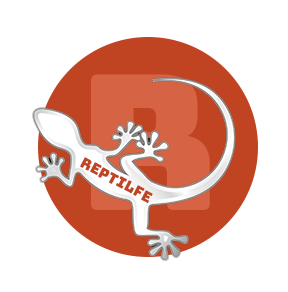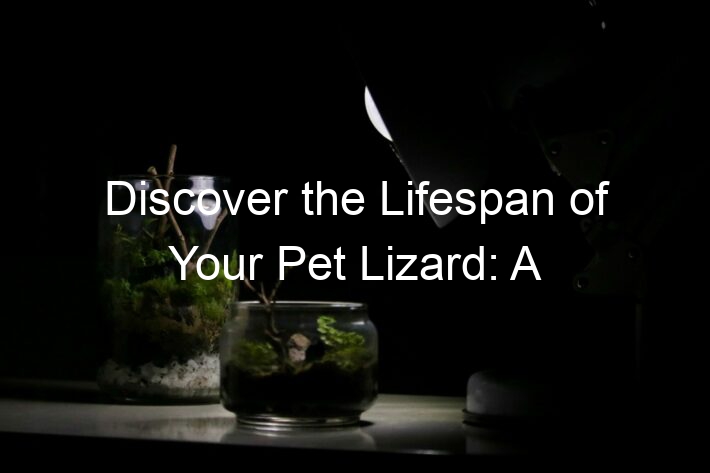Embarking on the captivating journey of reptile ownership comes with great responsibility. Just like any other living creature, reptiles can experience stress or discomfort, but they often communicate these feelings in subtle ways.
In this article, we delve into the world of reptilian behavior and decode the signs of stress or discomfort that these remarkable creatures exhibit. Discover valuable insights and expert advice on how to address these issues effectively, ensuring the well-being and happiness of your scaly companions.
How can you tell if your reptile is stressed?
Reptiles have their own unique ways of expressing stress, and being able to recognize these signs is crucial for their well-being. Watch out for unusual behaviors such as excessive hiding, loss of appetite, sudden aggression, or frequent attempts to escape their enclosure.
Additionally, pay attention to changes in their body language, like flattened or puffed-up posture, rapid breathing, or repetitive pacing. By being observant and attuned to your reptile’s behavior, you can detect signs of stress early on and take appropriate action.
What are the common behavioral changes associated with reptile distress?
When reptiles are experiencing distress, their behavior may undergo noticeable changes. For example, they might become more lethargic, spending increased amounts of time immobile or in hiding.
Conversely, some reptiles may display hyperactivity or restlessness as a result of stress. Additionally, you may observe unusual repetitive behaviors like incessant scratching or rubbing against objects in their enclosure. By understanding these common behavioral changes, you can identify when your reptile is distressed and intervene accordingly.
Do reptiles exhibit physical symptoms when they’re uncomfortable?
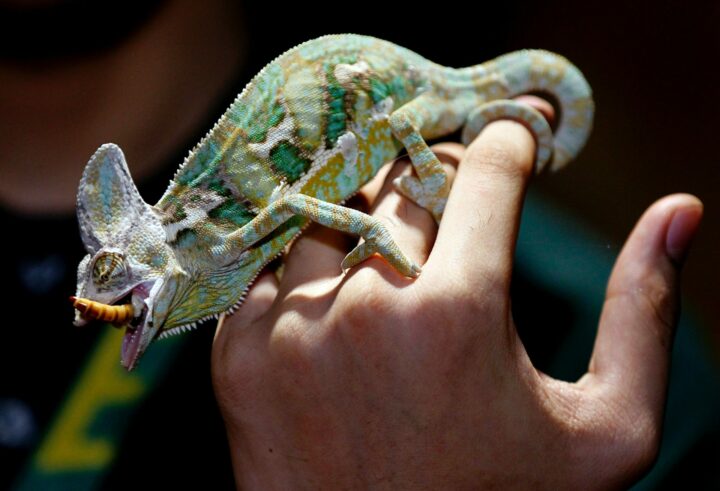
Yes, reptiles can exhibit physical symptoms when they’re feeling uncomfortable or stressed. These symptoms may vary depending on the species, but some common signs include changes in skin coloration or patterns, abnormal shedding, weight loss, swollen joints, or respiratory issues such as wheezing or excessive mucus.
It’s important to regularly monitor your reptile’s physical condition and seek veterinary assistance if you notice any concerning or persistent physical symptoms.
Are there specific signs of stress in different reptile species?
Indeed, different reptile species may display unique signs of stress. For instance, snakes may exhibit defensive behaviors such as hissing, striking, or rattling their tails, while lizards might engage in tail autotomy (shedding of the tail) as a defense mechanism.
Turtles and tortoises, on the other hand, may retreat into their shells for prolonged periods or refuse to eat. Understanding the species-specific signs of stress is essential for providing targeted care and addressing their needs effectively.
Why do reptiles become stressed in captivity?
Reptiles can become stressed in captivity due to a variety of reasons. One primary factor is the inability to replicate their natural habitat adequately. Insufficient space, improper temperature or humidity levels, lack of suitable hiding spots or climbing opportunities, and inadequate lighting can all contribute to reptile stress.
Additionally, disruptions in their routine, such as frequent handling or exposure to loud noises, can also lead to stress. It is our responsibility as reptile owners to create an environment that closely resembles their natural habitat and provide them with the necessary care to minimize stress.
Can environmental factors contribute to reptile discomfort?
Absolutely, environmental factors play a significant role in reptile discomfort. Inadequate temperature and humidity levels can cause discomfort and affect reptiles’ physiological processes. Reptiles are ectothermic, meaning they rely on external sources of heat to regulate their body temperature.
If the temperature is too low or too high, it can disrupt their metabolism, digestion, and overall well-being. Similarly, improper humidity levels can lead to dehydration or respiratory issues. Maintaining a suitable environment with the right temperature and humidity range is essential for ensuring the comfort and health of your reptile.
Are there stressors that are often overlooked in reptile care?
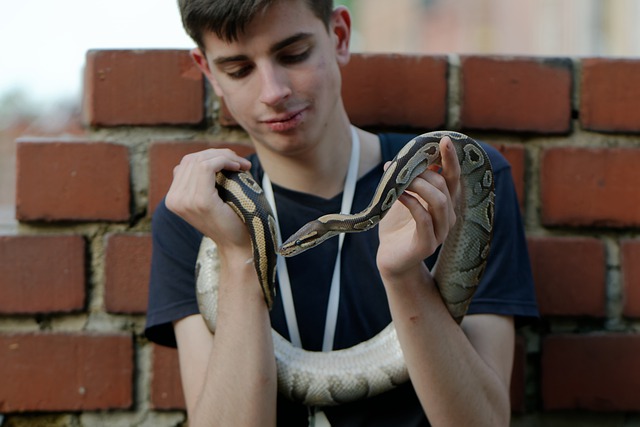
While we strive to provide the best care for our reptilian companions, certain stressors can sometimes be overlooked. One commonly overlooked stressor is the presence of other animals or even humans in the household.
Reptiles are sensitive creatures, and excessive noise, sudden movements, or prolonged exposure to unfamiliar faces or scents can cause them stress.
Additionally, disruptions in their feeding or shedding routines, inadequate substrate or habitat cleanliness, and lack of mental stimulation can also contribute to stress. By being aware of these potential stressors, we can take proactive measures to minimize their impact on our reptiles’ well-being.
How can temperature and humidity affect reptile well-being?
Temperature and humidity are critical factors that greatly influence the well-being of reptiles. Different reptile species have specific temperature and humidity requirements based on their natural habitats.
Incorrect temperature ranges can impair digestion, metabolism, and immune function in reptiles. Similarly, inadequate humidity levels can result in dehydration, respiratory issues, or difficulties with shedding.
Providing appropriate heating elements, thermoregulation zones, and monitoring humidity levels within the recommended range for your reptile species is vital for their overall health and well-being.
What role does proper lighting play in reducing reptile stress?
Proper lighting plays a crucial role in reducing reptile stress and promoting their overall well-being. Just like humans, reptiles require a balance of light and darkness to regulate their internal clocks and maintain healthy physiological functions.
The right lighting mimics the natural day-night cycles in their native habitats, providing them with the necessary cues for feeding, activity, and rest.
Additionally, certain reptiles, such as those that rely on UVB rays for synthesizing vitamin D3, need access to appropriate UVB lighting to prevent deficiencies and related health issues. By ensuring proper lighting conditions, you can help reduce stress in your reptile and contribute to their optimal health.
Do social interactions impact reptile happiness?
While reptiles may not exhibit social behaviors in the same way as mammals, social interactions can indeed impact their happiness and well-being. Some reptiles, such as certain species of turtles or monitors, may benefit from having a companion of the same species.
They may engage in various forms of communication, territorial behaviors, or even engage in cooperative activities. On the other hand, some reptiles prefer a more solitary lifestyle and may become stressed or aggressive when forced into social situations.
Understanding the social needs and preferences of your specific reptile species is essential for creating an environment that promotes their happiness and allows for appropriate socialization, if desired.
How can you create a stress-free habitat for your reptile?
Creating a stress-free habitat for your reptile involves replicating their natural environment as closely as possible. Start by providing an adequately sized enclosure that allows for comfortable movement and natural behaviors.
Incorporate appropriate hiding spots, climbing structures, and substrate that mimics their natural habitat. Maintain optimal temperature and humidity levels, as well as lighting conditions, to ensure their physiological needs are met.
Minimize external stressors such as loud noises, excessive handling, or sudden changes in the environment. Regularly clean and sanitize the enclosure to prevent the build-up of harmful bacteria or parasites. By focusing on these aspects, you can create a stress-free sanctuary for your reptile to thrive in.
Are there ways to provide mental stimulation for reptiles?
Absolutely! Reptiles, despite their reputation for being less interactive, benefit from mental stimulation and enrichment. You can introduce various forms of enrichment such as providing different textures, objects to explore or interact with, puzzle feeders, or hiding food to encourage natural foraging behaviors.
Incorporating environmental changes, such as rearranging the habitat or introducing new scents or sounds, can also provide mental stimulation. Some reptiles even enjoy visual stimulation, such as watching nature videos or having a view of the outside world. Experiment with different forms of enrichment to keep your reptile’s mind active and engaged.
What are some signs of discomfort during handling or interaction?
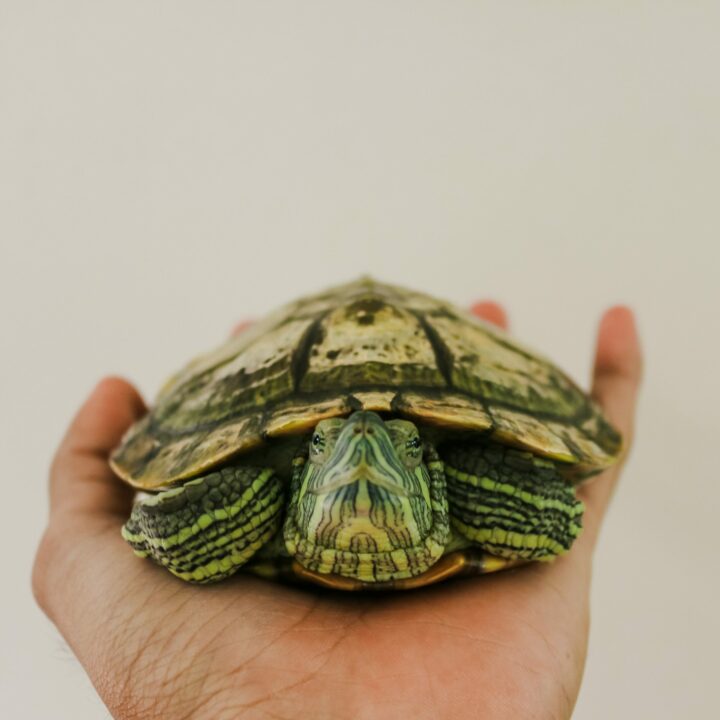
Handling and interaction can sometimes cause discomfort to reptiles if not approached with care. Signs of discomfort may include defensive behaviors like hissing, puffing up their bodies, or displaying aggression.
They may try to escape or exhibit stress signals such as rapid breathing, flattened posture, or tail whipping. Loss of appetite or avoidance behaviors during or after handling sessions can also indicate discomfort.
It’s essential to be mindful of your reptile’s body language and respond accordingly. If you notice signs of discomfort, give them space and try to identify the cause of their discomfort to ensure future handling experiences are more comfortable for them.
How can you help a reptile recover from a stressful event?
Reptiles, like any living beings, can experience stress from various events such as relocation, illness, or environmental changes. To help your reptile recover from a stressful event, provide a calm and secure environment.
Ensure they have access to appropriate temperature and humidity levels, and minimize disturbances or sudden changes in their surroundings. Offer them hiding spots and a consistent routine to help them regain a sense of security.
Additionally, provide proper nutrition, hydration, and veterinary care as needed. Patience, understanding, and gentle interactions will go a long way in helping your reptile recover from stress and restore their well-being.
Are there proactive measures to prevent stress in reptiles?
| Signs of Stress or Discomfort | Addressing the Issue | Preventive Measures |
|---|---|---|
| Excessive hiding, loss of appetite | Ensure proper habitat conditions, provide hiding spots, monitor feeding habits | Create a stress-free habitat, maintain a consistent routine, offer a balanced diet |
| Unusual behaviors (aggression, escape attempts) | Assess environmental factors, adjust habitat conditions, reduce stressors | Maintain suitable temperature and humidity levels, minimize disturbances |
| Abnormal shedding, changes in skin coloration | Monitor humidity levels, provide proper substrate, consult a veterinarian if necessary | Regularly clean and sanitize the enclosure, ensure proper shedding conditions |
| Rapid breathing, swollen joints | Check temperature and humidity levels, consult a veterinarian for medical evaluation | Regularly monitor temperature and humidity, provide appropriate heating and cooling options |
| Loss of weight, respiratory issues | Review diet and feeding habits, seek veterinary advice if symptoms persist | Offer a varied and balanced diet, ensure proper hydration |
Absolutely! Taking proactive measures can significantly help prevent stress in reptiles. Start by thoroughly researching the specific needs and requirements of your reptile species to ensure their habitat and care are properly set up from the beginning.
Maintain a consistent and appropriate environment by monitoring temperature, humidity, and lighting conditions regularly. Implement a regular feeding schedule and provide a balanced diet tailored to their species.
Minimize unnecessary disturbances or changes in their environment and handling routines. Regularly observe and interact with your reptile to detect any signs of stress early on. By being proactive in their care and attentively addressing their needs, you can prevent unnecessary stress and promote a healthier and happier reptile.
Summary
In conclusion, understanding the signs of stress or discomfort in reptiles is vital for their well-being. By recognizing the behavioral and physical indicators of stress, we can take proactive steps to address their needs and create a stress-free environment.
Factors such as proper lighting, suitable social interactions, a stress-free habitat, mental stimulation, and careful handling play significant roles in maintaining the happiness and health of our scaly companions.
By being attentive and responsive to their unique needs, we can ensure that our reptiles thrive, living their lives to the fullest. Remember, your reptile’s happiness and well-being are worth every effort in providing them with the care and attention they deserve.
